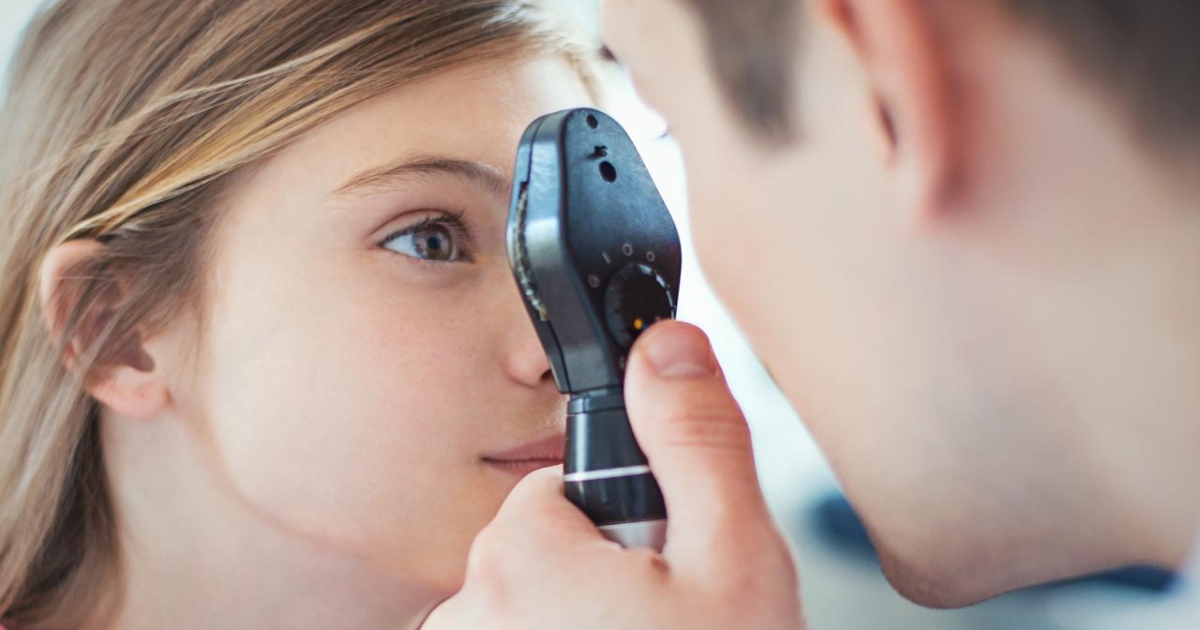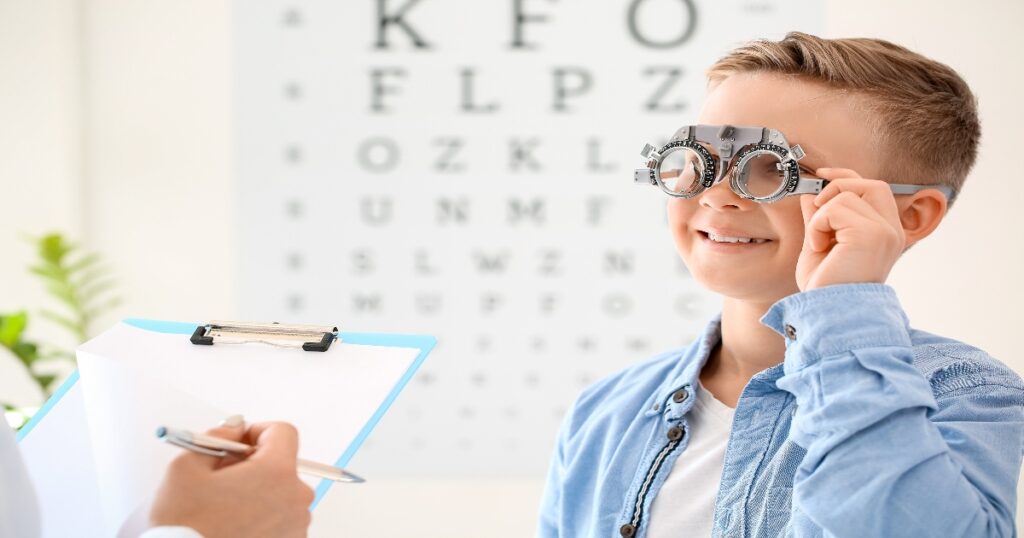
The importance of Paediatric Eye Exams
While it is common practice for paediatricians to conduct a brief vision screening at your child’s annual physical, it is important to emphasize that these screenings are not a substitute for a thorough examination performed by an Optometrist.
Optometrists utilize specific clinical and diagnostic tools and assessments to determine your child’s ocular health and visual abilities. Since many learning skills are dependent on the strength of visual skills such as binocular vision, accurate eye movements, the ability to see distant objects, etc., doctors recommend that children have their first eye exam even before reaching school age.
Vision Screening vs. Comprehensive Eye Exams

Many schools conduct vision screenings to identify any vision problems that may affect a child’s ability to learn.
Even if your child has passed a school vision screening, it is still strongly recommended to schedule a comprehensive eye exam. Vision screenings do not check for all the vision problems that can affect children.
When should my child have their first eye exam?
Optometrists recommend that children have their first eye exam at six months of age to ensure that their eyes are developing normally.
After this initial visit, doctors recommend that you bring your child for a second eye exam every year or at least by age 2 or 3, and then again before they start school.
Eye exams for infants (6 months to 2 years)
Babies by six months of age are tested for eye focusing skills, color vision and depth perception. The Optometrist will usually perform tests to determine pupil responses, how the child fixates and follows an object and preferential looking.
Eye exams for preschool children (2 to 5 years)
At this age, children are learning to color, draw, cut paper, stack blocks, build with Lego pieces, play with balls, and more! A comprehensive exam for preschool children usually includes a series of tests for visual acuity, lazy eye, stereopsis (3D vision), eye tracking, convergence, colour vision and ocular health.
All of these visual skills are vitally important for the healthy development of an infant and to prepare them for the school years ahead.
Young children are constantly learning new skills that will prepare them for when they learn to read and write. Visual skills, such as, visual perceptual skills, eye-hand coordination, fine motor skills, etc., are also essential for learning and academic success.
If you notice that your child is showing any signs of developmental delay, or if your child has difficulty recognizing shapes, colors, numbers, or letters, inform your eye doctor— a developmental delay may signal a vision problem.
Schedule an eye exam with your Optometrist so they can detect and diagnose any vision problems your child may have.
Eye exams for older children (6 to 18 years)
A comprehensive exam for an older child is similar to that of a younger child, but includes additional tests of specific visual skills that are essential for reading, learning, and even sports performance.
Many children have difficulty in school, either academically and behaviourally, because of undetected visual problems.
Children with reduced visual skills may also experience physical symptoms such as headaches, fatigue, and eye strain.
What is Myopia?
Myopia (nearsightedness), is a common refractive error that affects millions of children and adults worldwide. Myopia causes an inability to see distant images clearly.
Myopia affects up to 42 percent of all school-aged children.
It is often hereditary, and typically begins in childhood when the eyeballs are growing rapidly. Myopia develops when the eye grows too long (front to back), or the cornea and/or lens is too curved for the length of the eyeball. A myopic eye focuses an image at the front of the retina, instead of directly on the retina, causing blurry distant vision and clear near vision.
Myopia tends to worsen until the child reaches teenage years, and then begins to plateau at around age 20, when the eyes stop growing.
Signs and symptoms of Myopia include:
- Squinting when reading the board or watching TV
- Sitting at close proximity to the TV or computer screen
- Sitting at the front of the classroom to clearly see the teacher and board
- Holding books close to the eyes
- Disinterest in playing sports that require distance vision
Myopia is typically corrected with eyeglasses or contact lenses.
What is Hyperopia?
Hyperopia (far-sightedness) is a refractive error that causes an inability to see near objects or images clearly.
Hyperopia affects 13 percent of children between ages 6-17.
A hyperopic eye focuses an image behind the retina, instead of on the retina, resulting in distorted or blurry vision.
Hyperopia is an inherited vision condition that can develop in childhood, or later on in life. Although most cases of hyperopia develop because it runs in the family, complications in utero or early childhood such as illness or trauma to the eye, can increase the risk of hyperopia.
Syptoms of Hyperopia include:
- Near images or objects appear blurry, distance vision is clear
- Difficulty reading
- Headaches or fatigue after near vision activities (reading, writing, computer use)
- Eye strain
- Difficulty focusing on near objects
- Squinting
- Holding books at arm’s length
- Inward eye turn when trying to focus
Hyperopia can usually be corrected using corrective eyeglasses or contact lenses.
How often should my child have an eye examination?
It is important for an Optometrist to monitor their ocular health and development of the visual function. If your child does not need any vision correction, you can follow this schedule:
- Between 6-12 months
- Between 2-3 years
- Between 4-5 years
- Annually, from age 6 and above
If your child presents with a refractive error or reduced visual skills, your Optometrist might recommend more frequent eye exams to determine if there have been any vision changes since the last visit.
Source: optometrists.org
